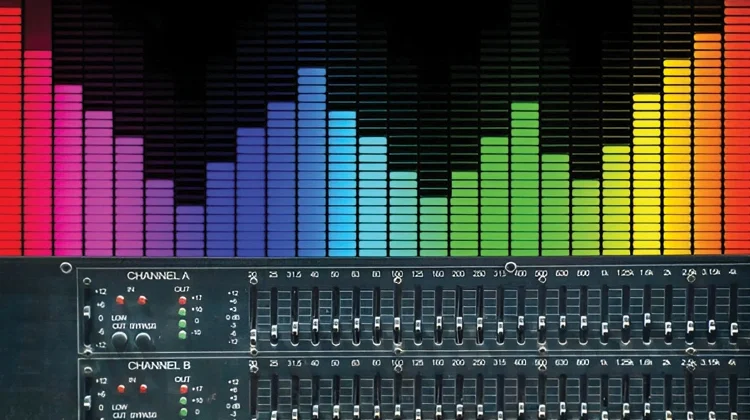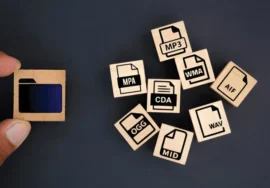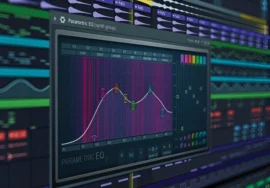
Behind the Scenes
Have you ever wondered how your favorite podcasts, audiobooks, or music albums sound so polished and professional? The answer lies in the art and science of audio editing. This meticulous process involves shaping raw audio recordings into a final product that is clean, engaging, and enjoyable to listen to. In this blog post, we’ll delve into the world of audio editing, exploring the techniques, tools, and challenges that go into creating a masterpiece.
The Role of Audio Editing
Audio editing plays a crucial role in various industries, including:
- Media Production: Podcasts, audiobooks, radio shows, and documentaries rely on audio editing to enhance clarity, remove noise, and add special effects.
- Music Production: Producers and engineers use audio editing to shape the sound of instruments, create unique effects, and mix multiple tracks into a cohesive composition.
- Voice-over and Dubbing: Audio editing is essential for ensuring that voice-over artists and dubbing actors deliver clear and consistent performances.
- Sound Design: Audio editors create sound effects and atmospheres that enhance the storytelling and emotional impact of films, games, and other multimedia projects.
The Audio Editing Process
The audio editing process involves several key steps:
- Recording: The first step is to capture the raw audio using a microphone or other recording equipment. The quality of the recording will impact the final product.
- Editing: The recorded audio is then imported into an audio editing software, where it can be manipulated and refined. This may involve tasks, such as:
- Trimming and Cutting: Removing unwanted sections of the audio.
- Noise Reduction: Eliminating background noise and other unwanted sounds.
- Equalization: Adjusting the frequency balance of the audio to enhance certain sounds or reduce others.
- Compression: Reducing the dynamic range of the audio to make it more consistent.
- Adding Effects: Incorporating various effects, such as reverb, delay, and distortion, to create a desired sound.
- Mixing: If multiple audio tracks are involved, they must be mixed to create a balanced and cohesive sound. This involves adjusting the levels of each track, panning them across the stereo field, and applying effects.
- Mastering: The last step is mastering, which involves applying a series of subtle adjustments to the overall sound of the audio. This may include tasks such as:
- Leveling: Ensuring that the audio is consistent in volume throughout.
- Limiting: Preventing audio from clipping (distorting) at high volumes.
- Equalization: Making final adjustments to the frequency balance.
Common Audio Editing Techniques
Audio editors use a variety of techniques to achieve their desired results. The most common techniques include:
- Time Stretching: Altering the tempo of the audio without affecting its pitch.
- Pitch Shifting: Changing the pitch of the audio without affecting its tempo.
- Flinging and Phasing: Creating rhythmic modulation effects.
- Distortion: Adding a gritty or distorted sound to the audio.
- Reverb and Delay: Simulating the acoustic characteristics of a space.
Audio Editing Software
There are many audio editing software programs available, each with its own unique features and capabilities. The most popular options include:
- Adobe Audition: A powerful and versatile audio editing software used by professionals in the music, film, and broadcast industries.
- Pro Tools: A popular digital audio workstation (DAW) used for music production, recording, and mixing.
- Logic Pro: A professional DAW designed for Mac users.
- Reaper: A popular and affordable DAW that offers a wide range of features.
- Audacity: A free and open-source audio editor that is suitable for both beginners and professionals.
Challenges and Considerations
Audio editing can be a complex and time-consuming process. Some of the challenges that audio editors face include:
- Noise Reduction: Removing background noise can be difficult, especially if it is similar in frequency to the desired audio.
- Equalization: Finding the right equalization settings can be challenging, as it can significantly affect the overall sound of the audio.
- Mixing: Mixing multiple audio tracks can be difficult, as it requires careful balancing and panning to create a cohesive sound.
- Mastering: Mastering is a subtle process that requires a skilled ear and experience.
The Future of Audio Editing
As technology continues to advance, we can expect to see even more innovative and powerful audio editing tools and techniques. Here are some trends that are likely to shape the future of the industry:
Artificial Intelligence (AI)
AI is already making significant strides in audio editing. AI-powered tools can be used to:
- Automate tasks: AI can automate repetitive tasks such as noise reduction, equalization, and compression, saving time and effort for audio editors.
- Enhance audio quality: AI can be used to improve the quality of audio recordings, even in challenging conditions.
- Create new sounds: AI can be used to generate new and unique sounds that would be difficult or impossible to create using traditional methods.
Virtual Reality (VR) and Augmented Reality (AR)
VR and AR are increasingly being used to create immersive audio experiences. Audio editors can use these technologies to:
- Design spatial audio: Create audio that is designed to be heard in a specific environment, such as a concert hall or a forest.
- Create interactive audio experiences: Develop audio that responds to the user’s actions and movements.
Cloud-Based Audio Editing
Cloud-based audio editing platforms are becoming increasingly popular. These platforms allow users to access powerful audio editing tools from anywhere in the world, without the need for expensive hardware.
Collaboration Tools
As audio projects become more complex and involve more collaborators, the need for effective collaboration tools is growing. Cloud-based platforms and real-time collaboration features are making it easier for teams to work together on audio projects.
Conclusion
Audio editing is a dynamic and ever-evolving field. As technology continues to advance, we can expect to see even more innovative and powerful tools and techniques. By staying up-to-date on the latest trends, audio editors can ensure that they are equipped to create the best possible audio experiences for their audiences.





